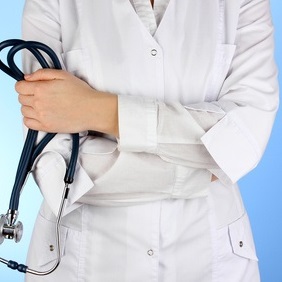Nipple discharge: Is it a sign of breast cancer?
Autore:Nipple discharge can happen in both men and women. While it can be entirely harmless in some cases, it can also be a symptom of an underlying health issue.
This article explores the causes behind nipple discharge, when to consult a specialist, and the treatment options available.

What is nipple discharge?
Nipple discharge is any fluid that comes out of the nipple without squeezing or stimulation. It can occur naturally in certain circumstances, such as during breastfeeding, but it can also happen at other times. Discharge can appear in various colours, including clear, yellow, green, or even bloody. The consistency of the fluid may also differ, ranging from watery to thick or sticky.
Nipple discharge isn’t exclusive to women; men can also experience it, although it’s less common. In men, nipple discharge can be related to hormonal imbalances, infections, or, in rare cases, male breast cancer.
What can cause nipple discharge?
Nipple discharge can be caused by a variety of factors, ranging from normal physiological processes to more serious underlying conditions. The main causes are:
Hormonal changes
One of the most common reasons for nipple discharge is hormonal changes.
- Breastfeeding: During breastfeeding, a woman’s body produces higher levels of certain hormones, such as prolactin, which stimulate milk production. This natural process can cause nipple discharge.
- Menstruation or the menopause: Hormonal fluctuations during the menstruation and the menopause can sometimes lead to temporary nipple discharge.
Benign conditions
There are several non-cancerous conditions that can also cause nipple discharge.
- Ductal ectasia: Ductal ectasia is a condition where the milk ducts become dilated and clogged, causing a thick, greenish discharge.
- Papillomas: Papillomas are non-cancerous growths in the milk ducts that can cause clear or bloody discharge.
- Infections or mastitis: Infections in the breast tissue, often due to blocked ducts or bacteria, can lead to nipple discharge along with other symptoms like redness, swelling, and pain.
Conditions such as thyroid disorders or pituitary tumours can result in nipple discharge as well. Additionally, trauma or injury to the breast tissue can sometimes lead to discharge.
Breast cancer
While less common, nipple discharge can be a sign of breast cancer, particularly if the discharge is bloody, clear, or from only one breast. In some cases, breast cancer can cause a blockage in the milk ducts, leading to abnormal discharge.
Medications
Certain medications, such as birth control pills, antidepressants, and drugs used to treat high blood pressure, can cause nipple discharge as a side effect. Medications can also alter hormone levels, which may lead to abnormal breast secretions.
When should I consult a specialist?
You should consult a specialist if you experience any of the following:
- spontaneous discharge, without any squeezing or manipulation of the nipple
- blood-stained discharge or clear discharge with a red tint
- discharge from one breast only, particularly if it’s persistent or accompanied by a lump
- any changes in the shape, size, or texture of the breast, along with discharge
During your consultation, your specialist will carefully examine the breast and nipple for any lumps, changes in texture, or signs of infection.
The following tests may then be recommended to determine the cause of the discharge:
- Mammogram: A mammogram is an X-ray of the breast tissue that can help identify abnormal growths, cysts, or tumours.
- Ductography: If the discharge is coming from a single duct, a ductogram may be recommended. This procedure involves injecting a contrast dye into the milk ducts to identify any blockages or abnormalities.
- Biopsy: If there are concerns about a potential tumour, a biopsy may be performed to remove a small sample of tissue for examination under a microscope.
Is there any treatment for nipple discharge?
The treatment for nipple discharge depends on its cause:
- Hormonal changes: If the discharge is related to hormonal imbalances, hormone therapy will be prescribed to regulate hormone levels.
- Benign conditions: If the discharge is caused by a benign condition like ductal ectasia or papillomas, it will be managed through simple measures such as antibiotics (for infections) or minor surgical procedures to remove growths or blockages.
- Cancer: If the discharge is related to breast cancer, treatment will depend on the type and stage of the cancer. This may involve surgery (such as a lumpectomy or mastectomy), chemotherapy, or radiation therapy.
- Medications: If medications are causing the discharge, adjusting the prescription or discontinuing the medication will help resolve the issue.
Nipple discharge can occur for a variety of reasons, and while it’s often harmless, it’s important to pay attention to the characteristics of the discharge and seek medical advice when necessary.
With the right diagnosis, many causes of nipple discharge can be managed effectively, ensuring the best possible outcome for your breast health.


